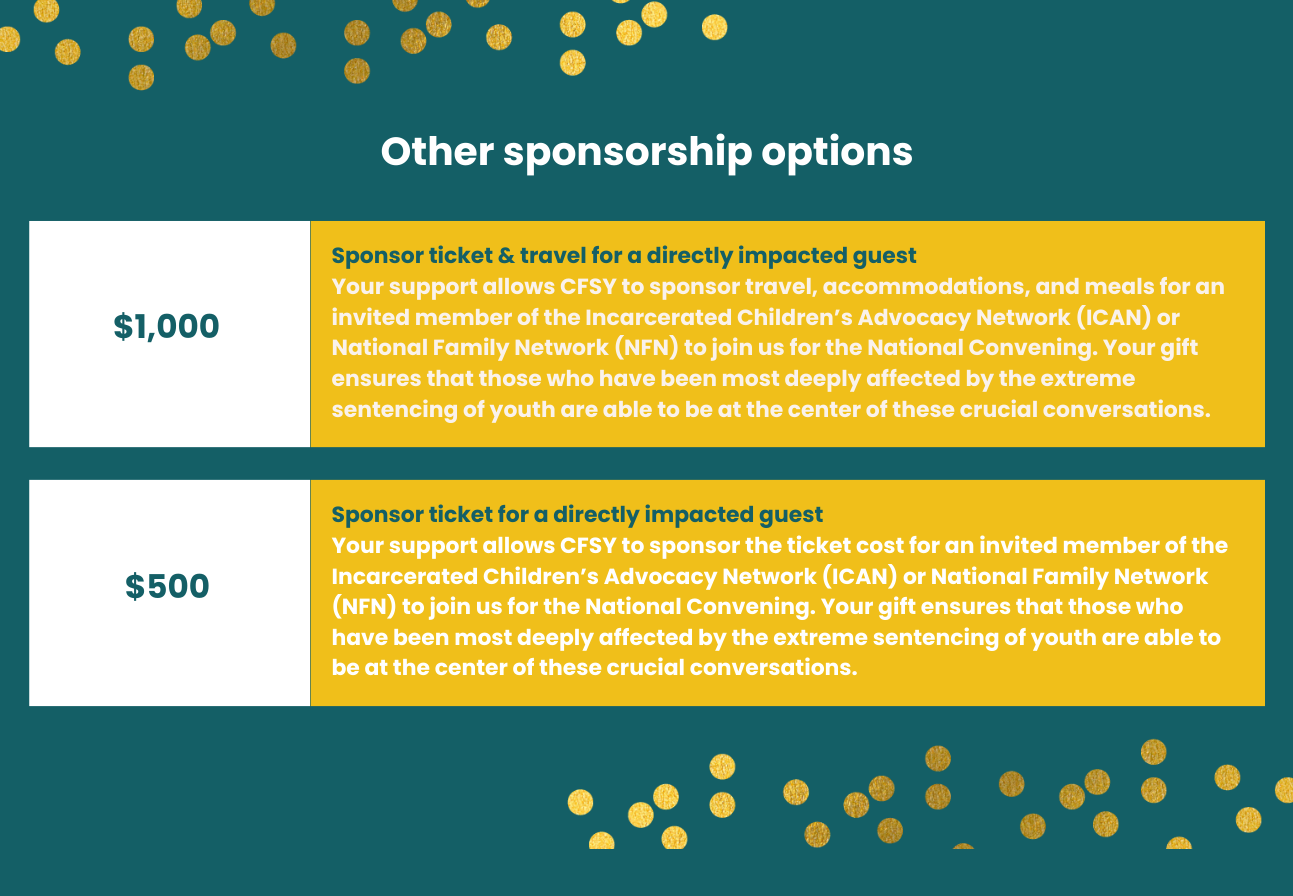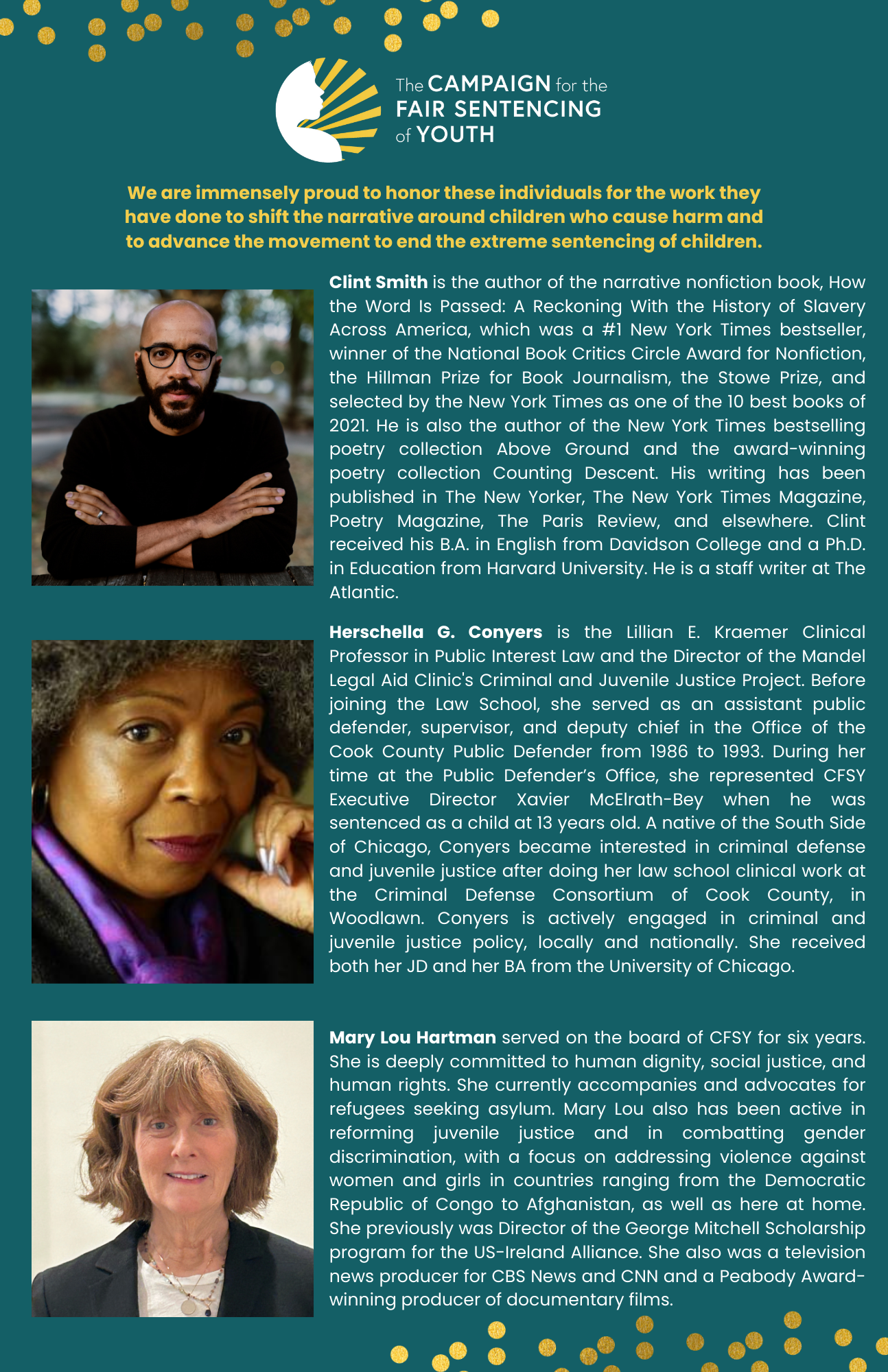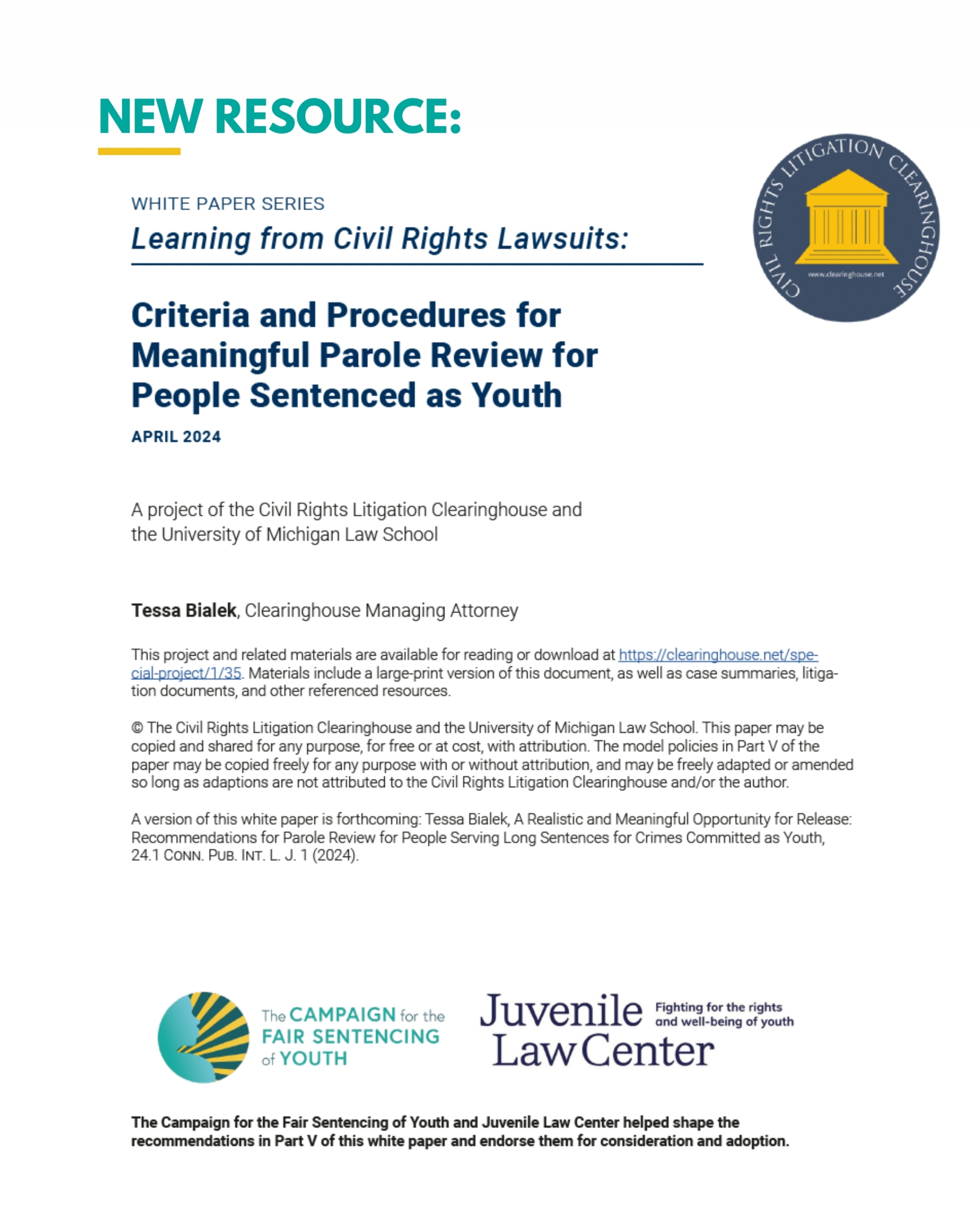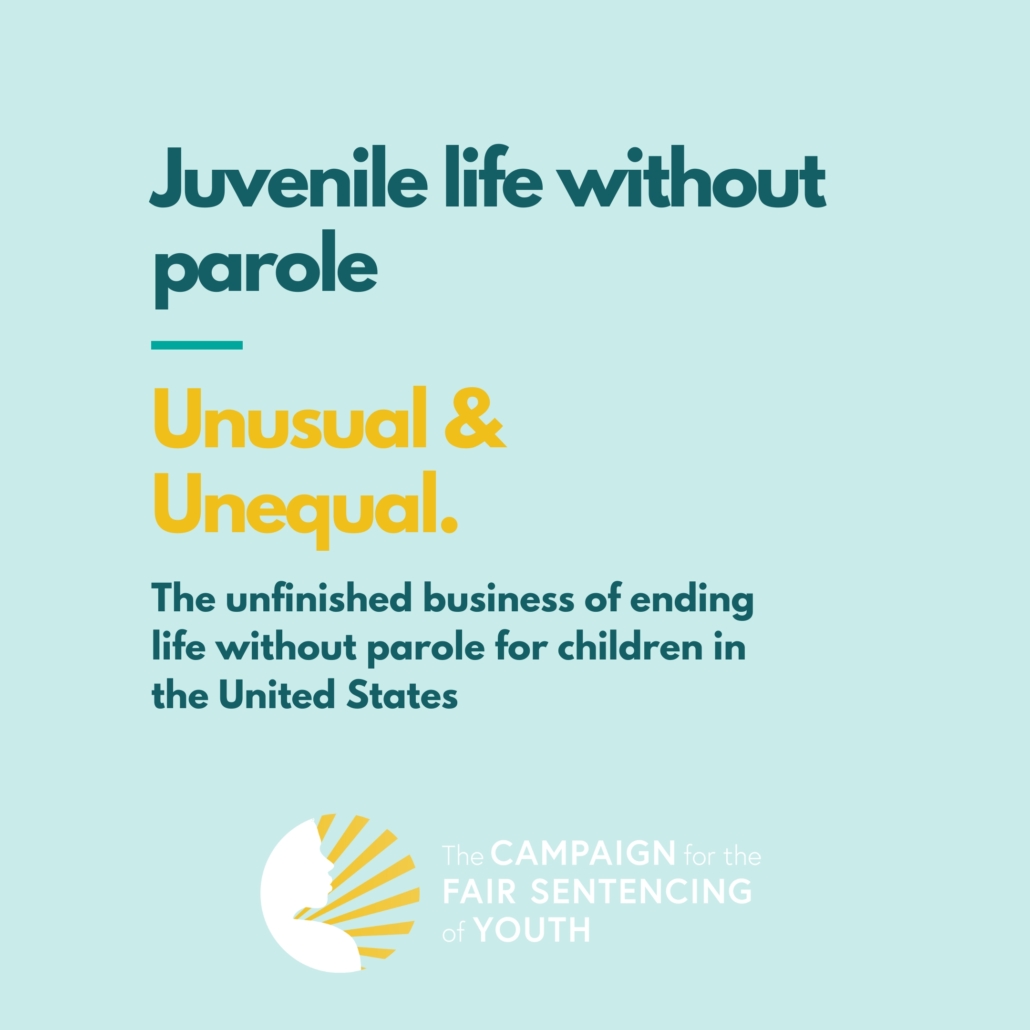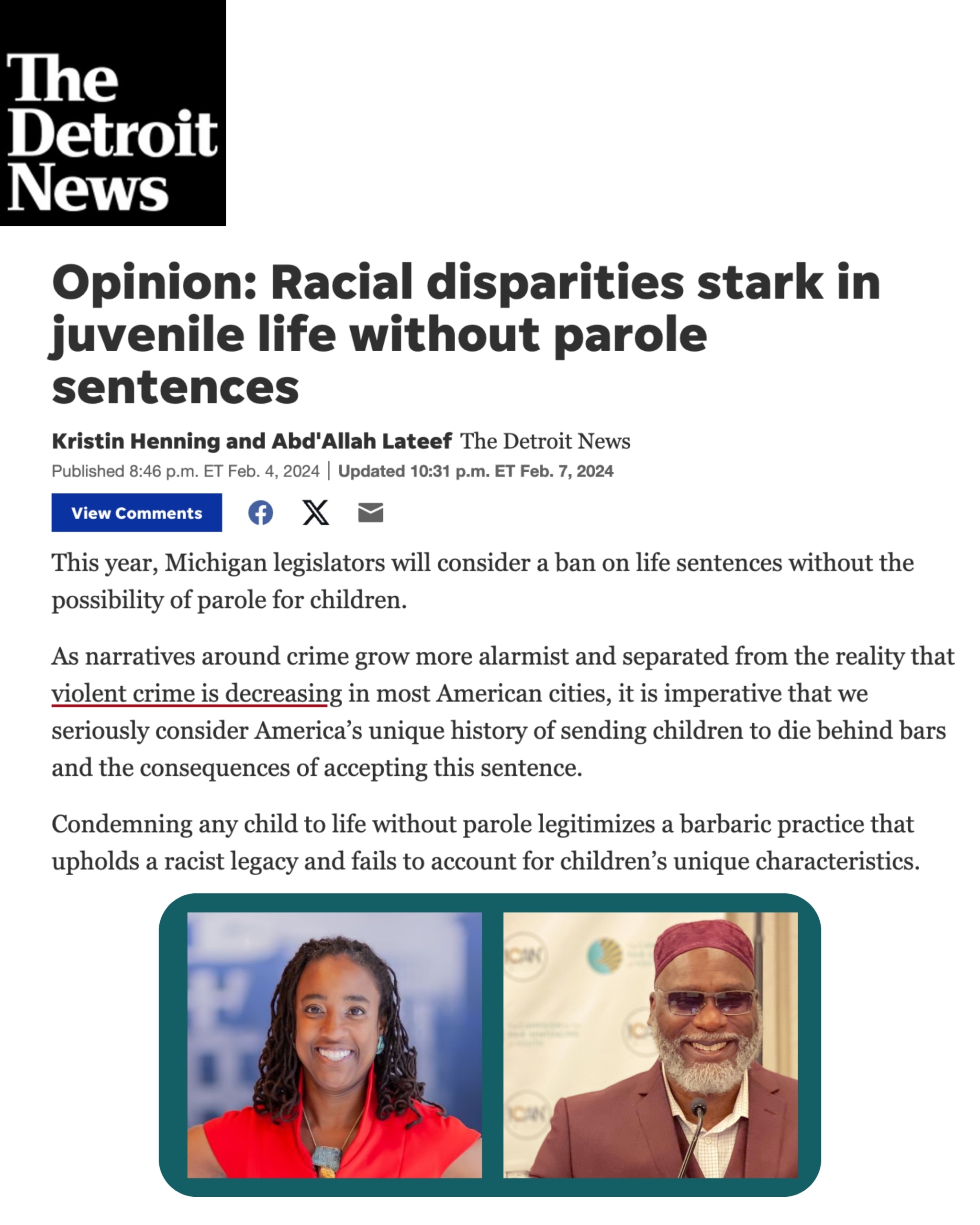Campaign for the Fair Sentencing of Youth (EIN 27-3761788) is a registered 501(c)(3) nonprofit organization
CFSY 2024 Sponsorship Options
For any questions on sponsorship, please contact Christina Oliver at [email protected].
White Paper: Criteria and Procedures for Meaningful Parole Review for People Sentenced as Youth
Thousands of people sentenced as children to extreme sentences now face parole review boards. But are the reviews meaningful?
The Campaign for the Fair Sentencing of Youth (CFSY) has endorsed a set of model policies to ensure parole review processes provide meaningful opportunities for release based on demonstrated maturity and rehabilitation. We’re excited to share the Criteria and Procedures for Meaningful Parole Review for People Sentenced as Youth, developed by the Civil Rights Litigation Clearinghouse.
The CFSY along with Juvenile Law Center endorsed these model policies, which include:
- Proposed criteria for a release decision;
- Access to programming and services;
- Counsel and other procedural supports;
- Best practices for risk assessments;
- Data collection and review; and more.
Some highlights from the model policies are outlined below.
Ensuring a Focus on Rehabilitation
In limiting life without parole for youth, the Supreme Court found that the vast majority of youth committed crimes out of a transient state of immaturity and recklessness, rather than what they referred to as irreparable corruption. Studies have comprehensively shown that the vast majority of youth “age out” of criminal behavior as they mature. As a result, parole board procedure should place an emphasis on rehabilitation rather than the facts of the crime. The model policies seek to codify this focus in several ways.
- A presumption in favor of release if there is a determination of demonstrated maturity and rehabilitation
- A list of required factors for consideration focusing on youth, with instructions to give substantial mitigating weight to the Miller factors
- A requirement that age at the time of the offense may not be considered aggravating
- A requirement that the parole board shall not deny parole based on factors outside demonstrated maturity and rehabilitation
- Requiring boards to regularly evaluate and identify appropriate programming and services to prepare for re-entry
- Requiring Departments of Correction to make identified programing available to the extent possible
- If denied, requires an individualized written statement of reasons, and what evidence was found to overcome the presumption in favor of release
Procedural Safeguards
There are many parole board procedures that are implicated in creating a “meaningful opportunity for release.” As discussed in further detail below, boards around the country have had to adjust their internal policies to account for this population and the requirements of the Supreme Court, many times after lengthy litigation. Parole boards that conduct only a “paper review” rather than a hearing are particularly ill-suited for people incarcerated as youth, who may not be as equipped to make written submissions rather than expressing themselves in an in-person conversation. Counsel is especially important for this cohort in terms of re-entry planning and presenting lengthy and complex information related to childhood trauma and rehabilitative efforts. Traditional risk assessment tools are also especially problematic for this cohort, as they are not designed or validated for people who went to prison for lengthy terms as youth. These instruments frequently treat youth as a factor weighing against release and assign higher risk scores to people who did not attain many of the societal markers such as high school graduation, marriage, employment history that this population likely did not achieve by virtue of their age.
- Provides for appointment of counsel through the public defender
- Provides for an in-person hearing with more than one member of the Board with a majority vote for release
- Requires the hearing to be recorded and retained by the Board
- Allows for independent psychological assessment at state expense
- Requires that any risk assessment used must account for the mitigating factors of youth and be validated to be free of racial bias
- Requires access by applicant or counsel to risk assessment and any expert evaluation
- Requires access to the record in advance of a hearing
- Suitability for parole shall be reassessed no more than two years after a denial
- Allows for judicial review of the parole board decision under an abuse of discretion standard
In addition to model policies, this important resource delves into the background of how the United States became the only country in the world to impose life without parole on children, including the national movement in the 1990s to abolish parole, and that movement’s ties to the now debunked “superpredator theory”. Further, the paper lays out the robust litigation history related to what constitutes a “meaningful opportunity for release” from courts around the country. This litigation history provides a crucial lens into the developing national norms around what constitutes a de facto life term and what procedures fail to provide constitutionally sufficient protections.
These model policies come at a vital time for parole systems nationwide. As states around the country abolish life without parole for children and instead proceed with parole-eligible sentences as an avenue to relief under Graham, Miller, and Montgomery, thousands of people sentenced as children to extreme sentences now face parole boards. To comply with constitutional mandates, this review must be a meaningful process, with considerations specific to youth, and policies that take into account rehabilitation rather than a simple review of the crime committed.
We hope this paper is a helpful tool for advocates representing people at parole or working for better parole policy, lawmakers looking to address extreme sentencing of youth, and parole boards looking for policies that will help them comply with mandates and create a system responsive to the needs of this population.
Special thanks to Tessa Bialek, Managing Attorney at the Civil Rights Litigation Clearinghouse for authoring the white paper.
In the news: Court ruling brings opportunity for 250-plus people sentenced to life without parole at age 18
This story features Jose Burgos, CFSY’s Michigan Campaign Coordinator and member of the Incarcerated Children’s Advocacy Network.

Staff Opinion: Children with adult prison sentences can still make good
Published originally in the Baltimore Banner by Eddie Ellis (CFSY Co-Director of Member and Outreach Services), read the full op-ed here.
Also accessible in PDF format here. 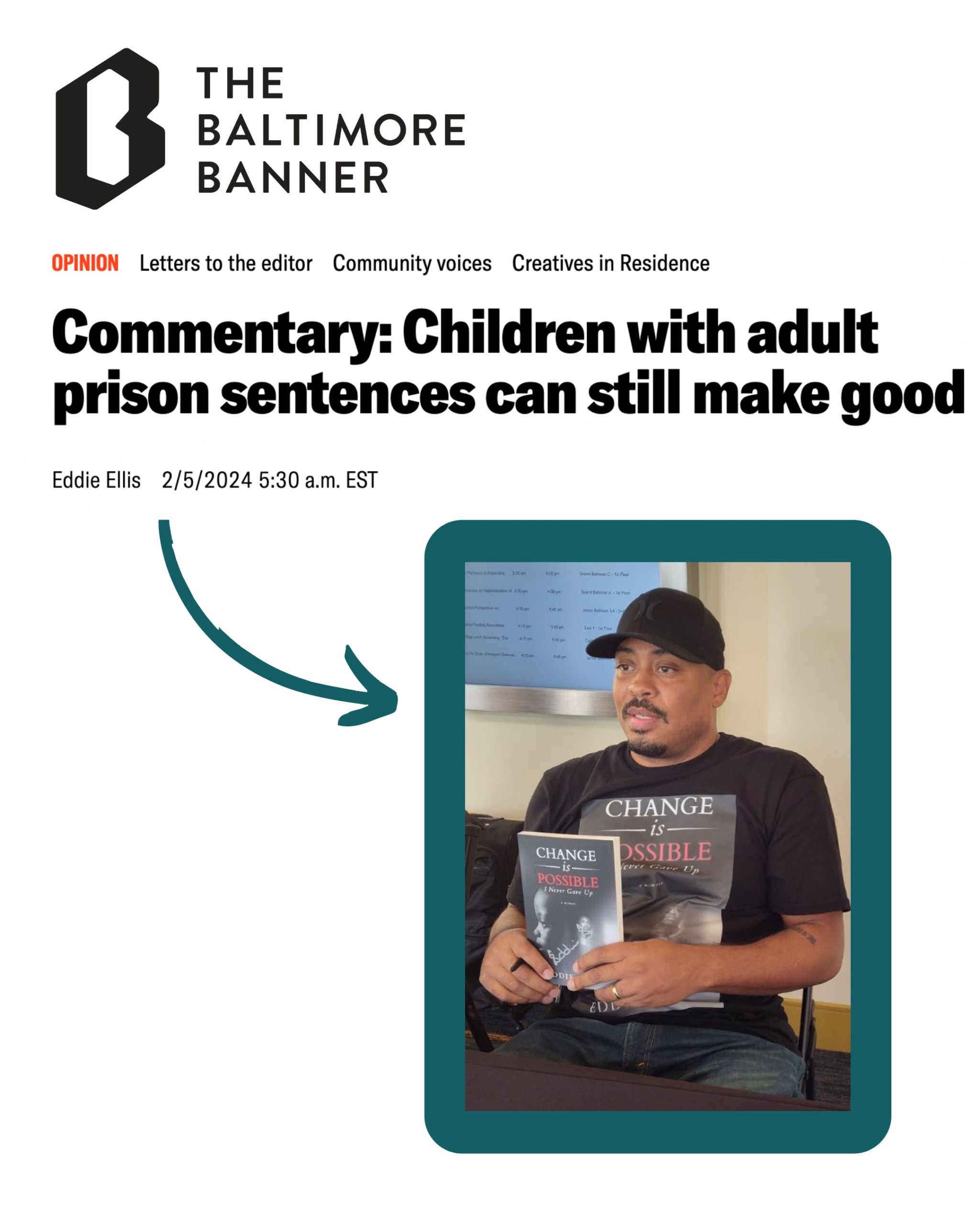
Commentary_ Children who get long prison sentences can build new lives – The Baltimore Banner
Opinion: Ending juvenile life without parole sentences to bring real justice to Wisconsin's children
Staff Opinion: Racial disparities stark in juvenile life without parole sentences
Read the full op-ed in The Detroit News here co-written by Abd’Allah Lateef, Deputy Director of CFSY with Kris Henning.



